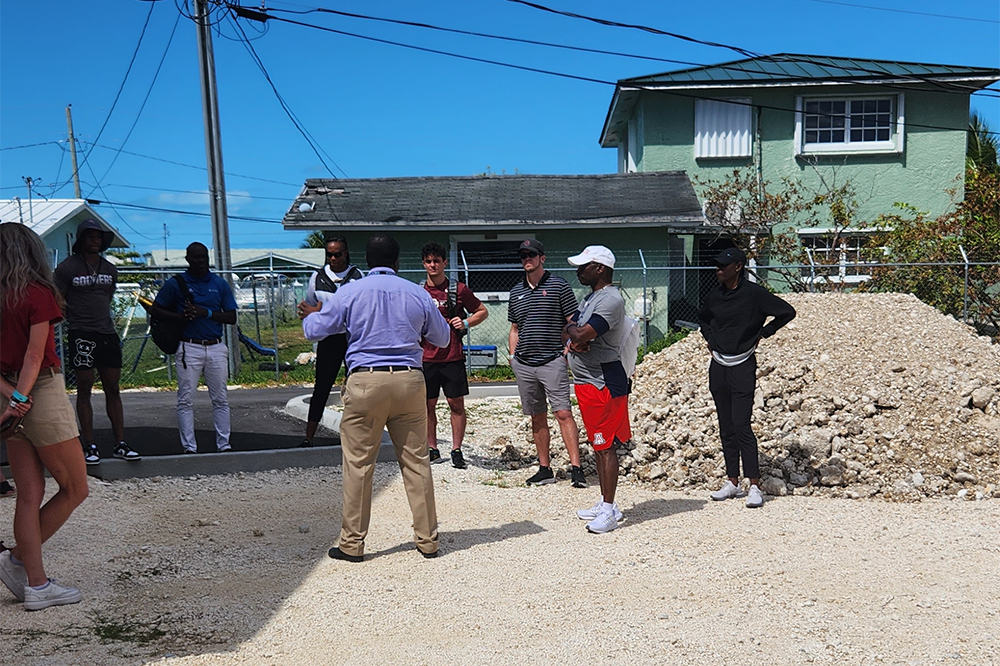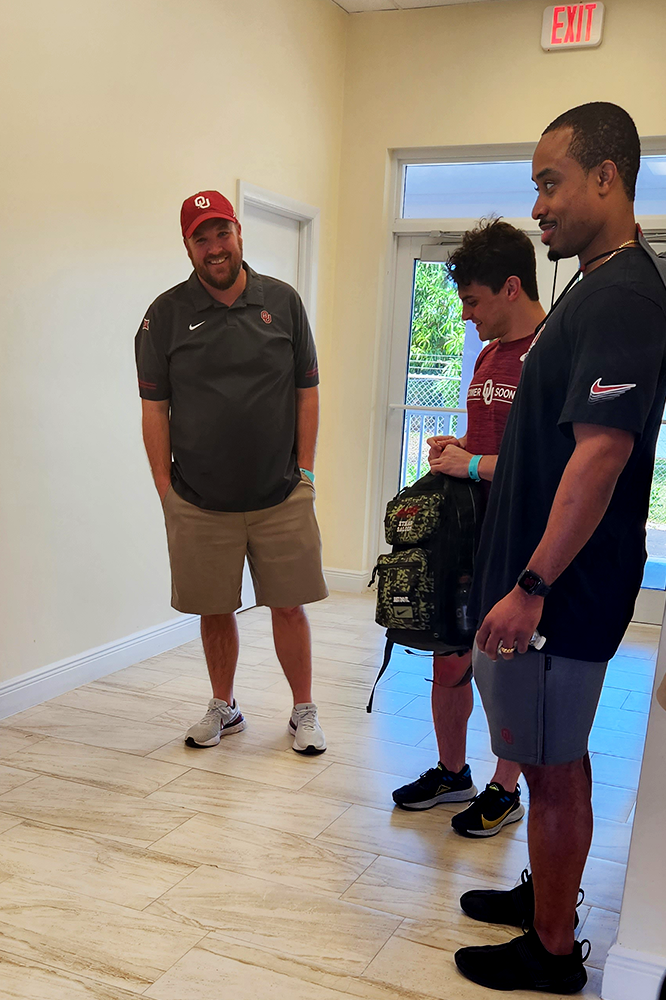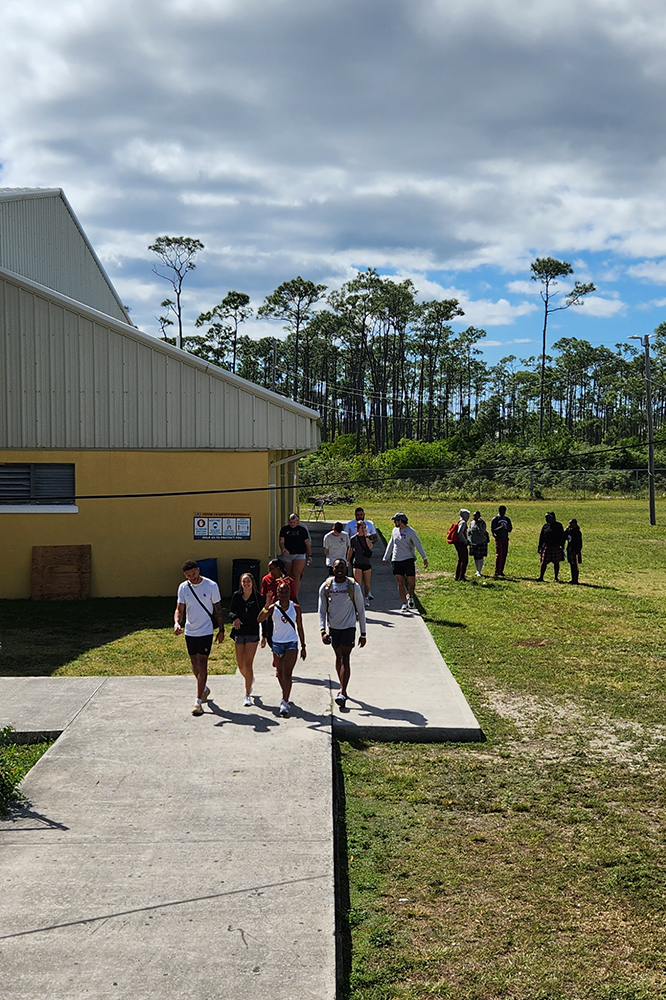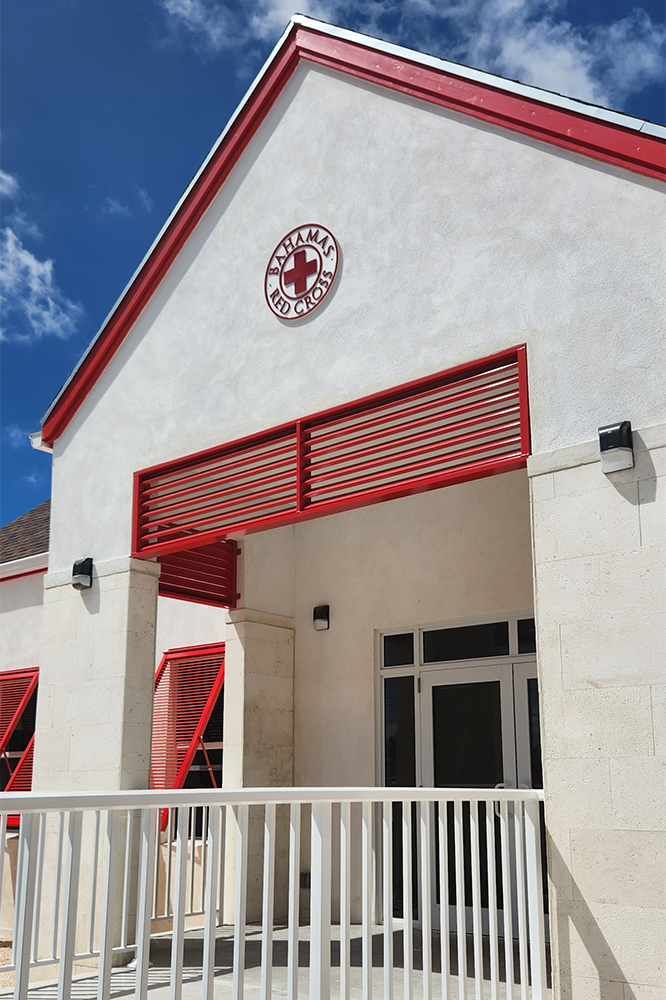The foundation for Bahamas Red Cross building was poured from the effects of Hurricane Dorian, and the growth is not only in the form of additional buildings from outreach efforts generated by COVID-19.
“I hate to keep coming back to COVID, but it is real,” Curry said. “The recovery from Dorian was already too much to bear, then you add a global pandemic to the mix, and you have an extensive disaster that will take generations to recover from.”
Coaches and staff were humbled as they learned of opportunities to help as they toured the small building that served such an enormous need. Each step taken to explore the structure told a story of how a community still recovering from a natural disaster was thrust into a pandemic. Life, health and financial stability compounded more when the world shut down. With ports closed, work halted, schools shut down and food scarcity was at an all-time high. Volunteers continued to push forward to help the most vulnerable of families.
As the bus returned to pick up students, many recalled similar stories from the high school students who were only a few years younger than them of a life plagued by Hurricane Dorian and COVID-19.
“Perseverance is a lesson we all learned,” said Tim Langford, OU head track and field coach. “So many times, our student-athletes see only their situation and they have no point of reference of what it means to endure. Experiences like this one that also includes a service trip aspect give us all perspective. Being able to persevere is what helps develop our students into well-rounded adults and professionals.”
The next day student-athletes took to the field for the Island Relays Bahamas, a competition that included two days of track and field competitions featuring collegiate athletes from U.S. and Bahamian universities.
“The impact a community from Norman, Oklahoma, had on the small Caribbean Island is immense,” said Joyce Johnson, co-founder of Island Relays Bahamas. “This connection allowed resources and support to pour into the community that has been suffering from lack of tourists. When you bring in hundreds of people, jobs are created and that means there is a boost to the economy. People who have been struggling to find work were able to make a living, from hotel staff to transportation personnel to local vendors and everything in between.”
The forecasted impact on the community of Grand Bahama from this event is $2 million. Organizers hope to build on this collaboration next year by doubling the number of universities that participate.
“Experiences like this are what sets the University of Oklahoma apart,” Smith said. “Coach Langford provided us with a way to broaden our perspective. It is more than just sun and sand; it is getting a deeper understanding of a different culture. In our short time here, we learned about our differences and made a difference in a community that is financially suffering.”
“Within a few days not only was a multi-million-dollar economic impact made, but also a humanitarian one,” said David Surratt, OU vice president for student affairs and dean of students “Our students dedicated their time and talents through philanthropy. As a result, our students gained a deeper appreciation and knowledge of the Bahamian culture and history. These are the types of encounters that shape our students and raise awareness to issues plaguing other societies.”
An impression was made on and off the field, with OU’s women's team winning first place and with Ashonti Warner setting the school record in the 400m hurdles.
To donate to the Red Cross Bahamas, visit bahamasredcross.org.




